-Vince
Okay, Vince, you asked for it so strap in because we're gonna be here for a while. And no, I didn't edit the question because...well...you needed to be exposed after asking a question like that.
Every man’s dream, big pecs and bis…the beach muscles. I hope you are frequenting the beach with skim board in tow again, otherwise what in the world are we talkin’ about?!
As always, I’ll offer a multifaceted answer since, as hard as I try to believe and follow the KISS principle, it is yet too lofty a goal.
Posture
Since I know and have worked with you on your program design over the years I can tell you that this is one of the simple reasons you (and many men) don’t perceive great pectoralis development, when in reality it’s already there. Slouching increases the kyphotic curvature (upper back) and, in essence, concaves your chest or anterior thoracic cavity. The good news if you find yourself in this situation?...you may be able to get a role as Quasimodo in local theater and pick up a few extra bucks. The bad news?...you look Pec-Less.
Ever watch bodybuilders pose (what am I saying…you own the “Pumping Iron: Special 25 Year Anniversary Edition”)? I’m guessing you’re familiar with Arnold’s infamous side chest pose. Notice the posture: excessively lifted chest, which is brought about by an increased lordotic curvature in the spine (low back arch). Yes they are all genetic freaks that use excessively too much “unnatural” assistance leading to ridiculously overdeveloped musculature. But the point is simple…they pose this way because it does increase the appearance of pectoralis size (see pics below).
 Take a look at these Arnold pics. Notice that in an exercise that forces some pectoralis firing, it doesn’t look nearly as big as you’ve probably seen in other pictures. Why? Posture. Also, when he's standing in what's considered anatomical position and not excessively lifting his chest like in the picture above, his upper pec does not look nearly as developed.
Take a look at these Arnold pics. Notice that in an exercise that forces some pectoralis firing, it doesn’t look nearly as big as you’ve probably seen in other pictures. Why? Posture. Also, when he's standing in what's considered anatomical position and not excessively lifting his chest like in the picture above, his upper pec does not look nearly as developed.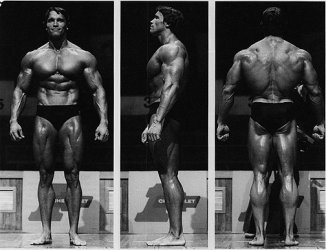 Take Home Message: Stand up tall, use good posture. Increasing the strength and stability of your upper back (mid/lower traps, rhomboids) and all spinal erector groups will improve the appearance and perception of pec development (not to mention the health of your shoulders).
Take Home Message: Stand up tall, use good posture. Increasing the strength and stability of your upper back (mid/lower traps, rhomboids) and all spinal erector groups will improve the appearance and perception of pec development (not to mention the health of your shoulders).Genetics

Most people don’t have as significant a number of upper pectoralis muscle fibers (clavicular area of pectoralis) as they do mid and especially lower pectoralis fibers (sternal area of pectoralis). Just the way we’re made. Why? Ask God. If you see the guys in the gym who have amazing upper pec development, first take a look at their posture. Good, right? Second, evaluate how big their upper pecs really are (or is it just posture?). If they have amazing pec development, you have my permission to hate them (I do). Somehow the wires got crossed and they got the pecs you ordered.
Again, take a look at bodybuilder pics. It’s reasonable to say that even they don’t all have amazing upper pecs, they simply have ridiculously low bodyfat and know how to pose; both of which increase appearance. The guy to the left does not have big upper pecs (more lower pec development than anything), but his pecs look big due to low bodyfat and posture.
Not enough variation in exercise/program design
Significant and common limitation. Simply stated, there is no best program…just better plans. Gotta be in it for the long haul, and in doing so it’s a necessity to constantly adapt program variables in order to stimulate muscle growth. I think you’ve made some great improvements in this area integrating Tudor Bompa’s periodization models. Just don’t stop there. Bompa is certainly one of the smartest guys in the business, but I don’t think he addresses exercise and tempo variations to a great degree. Keep in mind that he has primarily worked with athletes (who’s goals are not maximum hypertrophy but are more focused on hypertrophy in order to maximize strength and power; and yes, there is a difference).
Take Home Lesson: program/exercise/tempo changes are necessary for someone like you (more advanced lifter) on a more frequent basis. Small changes should be made weekly (subtle tempo, rep, weight alterations). More significant changes should be made every month to 3 months (exercise choices, exercise order/pairing, rep schemes). Remember, the longer you train, the more frequent variation you need to continue progressing.
Not enough isolated work negating closed chain movements
Isolated (or “biased” to be more correct) muscle work is a necessity for maximum hypertrophy.
Quick Exercise Physiology 101 review:
Isolated movements/exercises are those that are generally single joint or open chained exercises. Examples would include pec flyes and dumbbell chest press, respectively. It’s easiest to explain what an open chained exercise is by explaining what it isn’t. A Barbell Chest Press is a closed chained exercise (arms form a chain link with the barbell). Therefore, the dumbbell chest press is an open chain since it does not form a chain link. This explanation is oversimplified but will usually suffice. Going a bit deeper, in a closed chained exercise, movement at one joint forces movement at another joint.
Open Chained Exercises
Who cares, huh? Open chained exercises allow for more focused/biased muscle fiber work. Closed chain exercises recruit more overall musculature and may therefore not allow the emphasis necessary to bring up “weaker” or smaller muscles.Sidenote: this is why you can always to more total weight with a barbell bench than a dumbbell bench.
Take Home Lesson: make sure you’ve got plenty of isolated/biased pec (and specifically upper pec) exercises in your program for at least 3-6 months of the year.
Not enough time under tension
Another program design variable. Refers to how long a muscle is working (maintaining tension) during a set. Research tells us that in order to achieve hypertrophy, the time under tension (TUT) for a muscle during a set should be at least 20 seconds and up to 60 seconds. This stimulates a variety of hormonal responses leading to muscle rebuilding and remodeling post muscle breakdown.
For this to happen you must perform either within a general rep range that best allows for this (which is why you usually see ranges of 6-12 or even 15 for hypertrophy) or slow down your tempo when performing less reps (which is why you may see 4-2-2 to 2-1-1 and everything in between).
Sidenote: the tempo delineation is read as follows…
First number is the eccentric (lowering) action of the lift
Second number is the pause between eccentric and concentric
Third number is the concentric (lifting) action of the lift
More exercises focusing on increased ROM
If you want to build more muscle then you’ve got to recruit more muscle fibers. Contrary to popular magazines and muscle head thought, you can’t work your “inner” pec (meaning the middle area near the sternum) by really squeezing the dumbbells together at the end of the pec fly. That’s ridiculous. Anybody who’s read basic muscle physiology knows that muscle fibers don’t contract in sections, they contract completely. It’s call the “All or None Principle.” Either a fiber contracts all the way or not at all.
The point? When you want hypertrophy it’s important to recruit as many of the fibers as possible. How? By pushing the muscle to greater levels of fatigue, allowing incomplete recovery between sets (short rest of 30-60 seconds), and making certain to include exercises that work a muscle through its maximal/safe range of motion.
Take Home Lesson: do exercises that allow the arms to move through full horizontal adduction (hands come all the way together in front of the body)…UNDER TENSION (this is the key). You can accomplish this with machines and cables but usually not with dumbbells. If you bring dumbbells all the way together at the top of the lift (like the tough guys do who like to slam them together each rep so everyone knows how much weight they’re lifting), you will most likely rest the muscle and lose tension on your pec since the arm is essentially in a balanced position (direction of resistance aligns with lever moving the resistance).
Not receiving enough frequency in program.
If it is a body part that is weak (compared to other musculature development in your body) then it needs priority in your program and must be targeted every 3-4 days. When focusing on “bringing up” a weak body part, it simply takes more time and priority in your program. That means other areas will have to be maintained while you attempt to increase pec size. There isn’t enough time in the week (or recovery ability of most people) to simply add more pec work into an already full workout program.
By the way, I didn’t mention that your exercises should be more of an inclined bench/fly nature in order to target the clavicular head of the pec…but did I really need to?
Hope that helps, Vince. And yes, you’re still my inspiration even though you made me write a lame bodybuilding blog.

Someday I'm sure you'll look like this recent photo of me (I know I know...my upper pecs are still a little weak). Keep workin' buddy.
*Pictures from www.bodybuilding.com



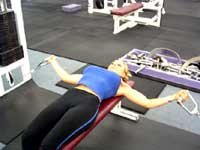
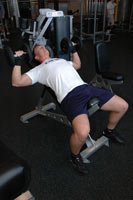
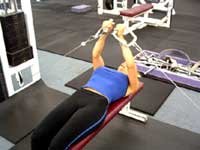
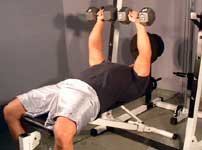
5 comments:
Undeniably your best article to date. I see you again and again returning to the YTWLs as a panacea. Thank you for slaving over this article. It was good, very good, and I look forward to more muscle head myth-busting from you in the immediate future!
Your Hero,
Vince
Glad you enjoyed. Added a couple pictures which will hopefully drive home the concepts.
Cool post. I've experience a similar problem developing my upper pecs as you've mentioned in your post.
As always thanks for keeping us informed with your research and all this information which is informative as well as humorous.
After all this if Vince doesn't have highly developed pecs next time you see him, I would suggest looking for a new hero. =)
Jeanne and Dave,
Thanks for the kind words.
Dave, where are you practicing your PT? Great to see a posture blog. I'll take a closer look this week. Be great to have a quality place to send my clients as posture is such an integral part of my training and philosophy of movement.
Post a Comment